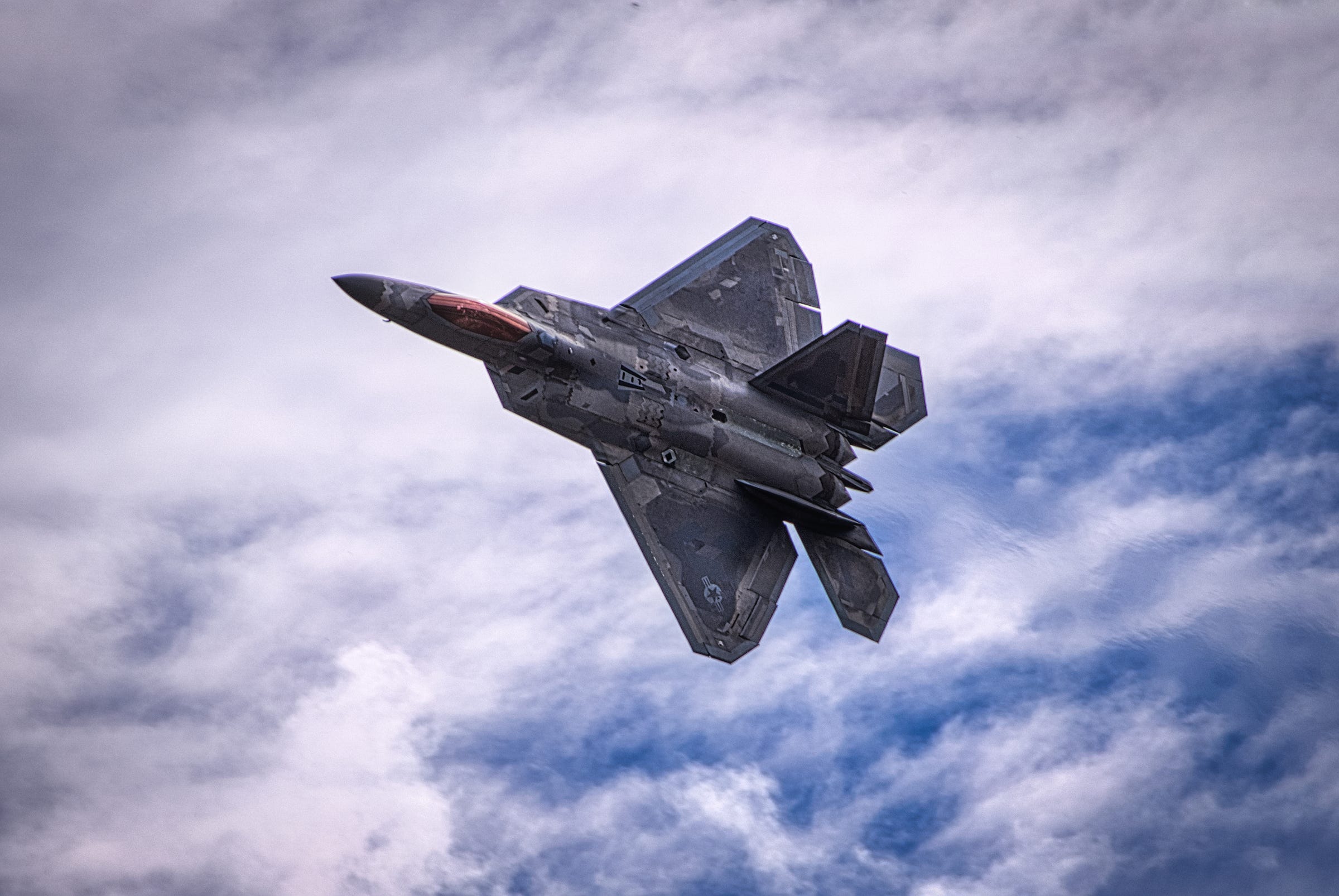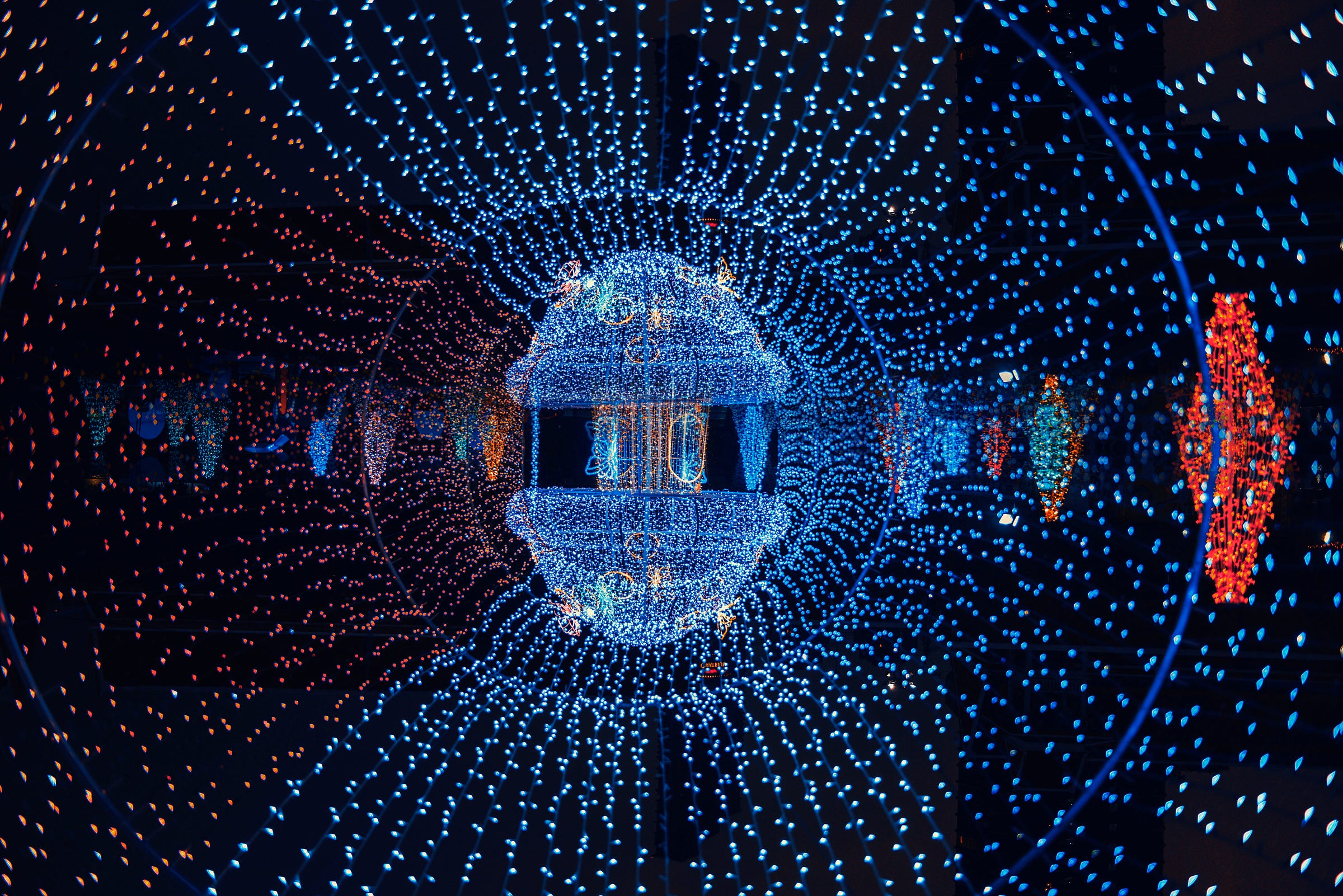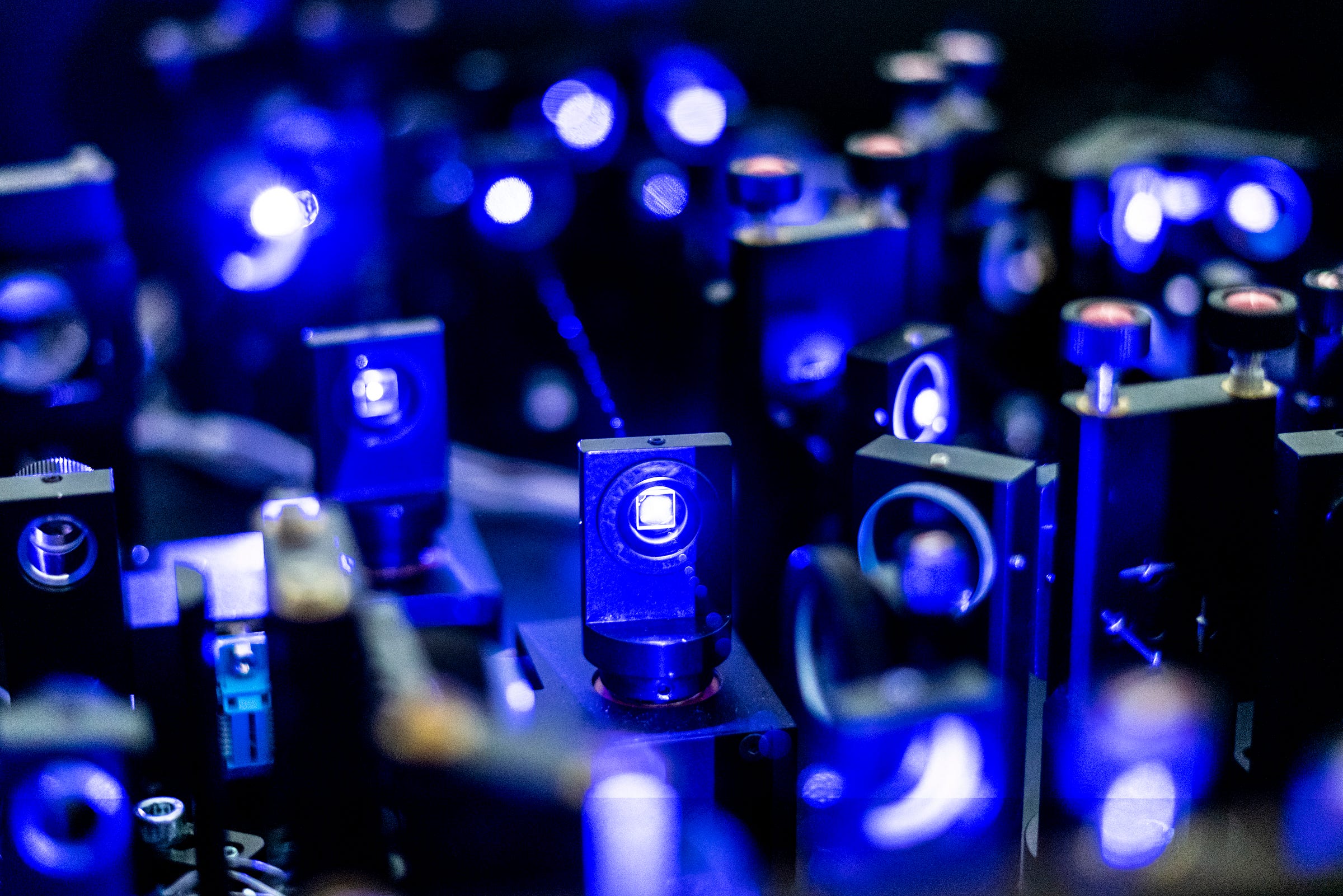China’s Claims it Can Track the F-22 With Quantum Radar
Is American stealth dead?
Note: I realized after the fact that I used a lot of radar jargon from my time in the Air Force in this piece. So, I have retroactively gone back and spelled out many acronyms that may not be extremely familiar or defined something in a note in italics like this one.
Recent reports say People’s Republic of China is mass-producing a “photon catcher,” an ultra-sensitive single-photon detector that China claims could underpin a quantum radar capable of tracking stealth aircraft such as the F‑22 Raptor or F‑35 Lightning II.
The Chinese research center in Anhui claims the new device is “self-sufficient” and [they are the] “international leadership” (sic.) for quantum information tech.
So, the question is: Does this mean stealth aircraft are now detectable everywhere?
Eh, not yet, and likely not for the near-term.
Still, it is a little alarming. The Chinese seem to be catching up technologically at an alarming rate. I’ve discussed the reasons for this before, but here I’ll give a breakdown of the news and how the US should respond. Let’s jump in, y’all!
Military radar has remained largely unchanged since its development well over 100 years ago.
As my readers know, my primary responsibility in the Air Force was the repair and maintenance of the complex radar system onboard the E-3 Sentry AWACS aircraft.
The radar lessons I learned in tech school, however, were exceedingly simple: a transmitter emits a radio wave that is reflected back when it comes in contact with an object.
If that object is moving toward or away from the transmitter, the return signal has a slightly different frequency, caused by the Doppler effect. By calculating the time of flight of a radio wave moving at the speed of light and the Doppler effect, you can determine the distance and speed of most conventional aircraft.
Named after the Austrian physicist Christian Doppler, the Doppler effect is the change in frequency or wavelength of a wave in relation to an observer. It’s the reason why a passing ambulance has that familiar change in pitch as it passes by. Compressed sound waves as it moves toward you are higher pitched. Whereas stretched out soundwaves as it moves away result in a lower pitch.
America’s entire stealth program is built upon the principle of absorbing radio waves with special materials and geometry so they don’t reflect signals back to an adversary’s radar system. In that way, America’s stealth warplanes like the F-22 Raptor, F-35 Lightning, and B-2 Spirit can remain relatively invisible on most current radar systems.
Back in 2019, MIT Technology Review reported that researchers at Austria’s Institute of Science and Technology used entangled microwaves to create the world’s first quantum radar system.
Whether China piggybacked on this Austrian research from 2019 or was developing it in parallel remains to be seen. Regardless, they have allegedly made some breakthroughs.
Quantum mechanics allows for some very interesting phenomena on the magnitude of the very small. One of these phenomena is known as the “principle of entanglement,” where two particles can be linked together regardless of distance.
This forms what scientists call a quantum entangled pair. According to the MIT announcement, quantum radars involve pairing photon particles, shooting one downrange while keeping the second captive for observation.
The downrange particle will act in a certain manner as it bounces off certain objects, behavior that can be observed in the captive particle. The result is much more detailed information about the target than could be seen in previous radars.
This results in an ultra-high-definition radar picture.
So instead of seeing an indistinguishable blob on a radar scope, quantum radar would have the ability to make out fine details of an aircraft, for instance, the distinct shape of an F-35 Lightning.
However, because modern stealth aircraft are optimized for stealth against radio waves, quantum radar, which uses photons, would make stealth aircraft much more susceptible to detection.
In addition, traditional radars are “loud” in that they typically give away their position on the ground (or in the air in the case of the AWACS) by blasting out a high-energy radio signal.
Like having a six-foot-tall bug zapper in your living room, it’s hard to miss.
But quantum radar is nearly undetectable as it emits very little energy.
One of the countermeasures that the US military employs against enemy radar systems is electronic warfare, actively jamming an enemy’s radar signal. Quantum radar’s lack of detectability offers a distinct tactical advantage in warfare.
China’s announcement is specific: the “photon catcher” with four channels, ultra-low noise, single-photon detection.
Such a device could form part of a quantum radar or quantum communication network. But it is not proof that China has a full quantum radar system deployed, tracking stealth fighters over hundreds of kilometers in contested airspace. Analysts are clear: it is potentially meaningful but still far from proven.
In other words: the piece is real. The full puzzle, system integration, range, reliability, clutter environment, atmospheric effects, moving targets, stealth coatings, is not solved.
My best estimate: Where we are now
I’d bet the Chinese detector is real. I’d bet it will generate genuine improvements in quantum sensing networks, some limited mode quantum detection or enhanced classical receivers. But I do not believe we’re at a stage where a stealth aircraft is exposed everywhere because of it. Any claim that stealth is dead is premature.
Stealth remains relevant. But what is changing is the stealth‐versus-detection calculus.
The US must adjust accordingly.
Quantum radar isn’t magic, but it could be transformative, if the full system works and is fielded at scale. What China claims the mastery of a critical component.
The US response must be multifaceted: update doctrine, invest in integrated detection, harden platforms, diversify sensor arrays.
In short: Don’t sleep on stealth’s future just yet, but don’t be complacent either.
Watch the detector, test the system, adapt quicker than your adversary. Because if they manage to kill your invisibility cloak, you’ll need something else.
Alright, let’s put dates and dollars on this thing instead of just waving our hands at Schrödinger’s radar.
US policymakers, this next section is for you…
A realistic timeline for quantum radar
Near term, 0 to 3 years, component sprint
What China is bragging about looks like a credible step in the parts bin, not a fielded kill chain. In the near-term you will see more single-photon detectors, better cryo packages to keep the equipment cold, low-power quantum illumination testbeds, and short-range demos that work on benign targets in clean air.
Think clutter-controlled ranges, instrumented blimps, big corner reflectors, and parked aircraft. You will also see classical radars quietly absorbing some of the algorithms and low-noise receiver tricks coming out of quantum labs.
Stealth is fine for now.
US to-do and budget
Fund parts, not posters. Dual-use single-photon detectors, low-noise cryo electronics, high-purity microwave sources, quantum compatible timing.
Rough order: $1.2 to $1.8 billion total over three years split across DARPA (Defense Advanced Research Projects Agency), ONR (Office of Naval Research), AFRL (Air Force Research Laboratory), and NIST (National Institute of Standards and Technology) with cost shares to industry and universities.
Deliverables: ship five transportable quantum illumination kits to government test ranges, put two on a ship pier, one on an AEW test aircraft, two on fixed over-the-horizon sites. Require side-by-side runs against top-end classical LPI (Low Probability of Intercept) radars to measure any real advantage.
Mid term, 3 to 7 years, system prototypes and ugly truths
If the physics survives contact with fog, salt, rain, and moving stealthy targets, this is where the story gets interesting.
Expect prototype quantum-aided radars that fuse quantum illumination receivers with classical apertures. Ranges will still be modest compared to a big S-band dish, but enough to cue other sensors.
The big lessons will be about clutter rejection, timing stability, and logistics, because the hardware wants low temperatures and careful calibration while the real world wants dust and boredom.
US to-do and budget
Stand up two competing quantum-aided radar prototypes, one ship-hard, one expeditionary.
Note: Expeditionary in the military sense means built to be cut off from the supply chain, as in “forward deployed”.
Procure a dedicated test squadron of surrogate stealth targets and cooperative jammers to pound these prototypes in mixed environments.
Rough order: $4 to $6.5 billion across this phase, including facilities, target services, and integration on a Burke-class test ship and a Gulfstream or EC-37 surrogate.
Deliverables: demonstrate target detection and track initiation on VLO-ish (Very Low Observable) surrogates at tactically useful ranges in weather, prove you can maintain calibration for weeks, and show the operator it adds value to a fused picture instead of noise.
Far term, 7 to 12 years, limited operationalization
If the mid-term results do not implode, you could see limited deployment of quantum-aided receivers at fixed coastal sites, on a handful of large deck ships, and perhaps in an AWACS replacement pod. Don’t picture a magical stealth buster beam. Picture a cueing layer that helps your passive IR, your ESM (Electronic Support Measures), and your multistatic net decide where to stare. The first deployed value is not range, it is classification confidence at the edge of detectability and better false alarm control.
Note: A multistatic net is also known as a multistatic radar system; a collection of geographically separated transmitting and receiving stations that work collaboratively to detect and track targets.
US to-do and budget
Transition one prototype into a program of record with spiral upgrades.
Invest in training, calibration automation, and maintenance toolkits so sailors and airmen are not babysitting cryo coolers all day.
Rough order: $7 to $10 billion to field a first tranch across Indo-Pacific fixed sites, two carrier strike groups, and one USAF airborne sensor wing.
Deliverables: integrated tracks in the common operational picture that measurably improve intercept timelines and reduce false cues.
What could break China’s timeline
Thermals and maintenance. If keeping these detectors cold and quiet is a diva act, the concept stalls outside the lab.
Atmospheric junk. Rain, ducting, sea clutter, and hot boundary layers can swamp tiny returns.
Good enough classical. Traditional, old-fashioned radar advancements like AESA evolution, multistatic networking tricks, and IRST networks may close most of the gap at much lower cost.
Supply chain. If you cannot buy repeatable low-defect devices at scale, you cannot field anything.
What the US should fund right now, line items that matter
Quantum receivers as cueing adjuncts, not silver bullets
Budget a $300 to $500 million per year line for quantum-aided receivers that bolt to existing apertures. Make “plays well with others” the threshold requirement. If it does not fuse cleanly with IRST, ESM, and passive RF, send it back.
Classical counter-counter
Pour $1 billion per year into the boring killers of stealth detection claims: multistatic and distributed MIMO radar, LPI waveforms, passive coherent location using civilian broadcasters, and next-gen IRST (Infrared Search and Track). If quantum claims stumble, these still win. If quantum works, they fuse beautifully.
Note: MIMO radar means Multiple-Input Multiple-Output radar is a system that uses multiple transmitters and receivers to improve radar performance, such as spatial resolution and target detection.
Stealth resilience and adaptation
Budget $750 million per year to harden VLO platforms against emerging bands and sensing modes. Reduce IR, manage edge currents, refresh RAM formulas (Radar Absorbent Material), and evolve tactics for multistatic threats. Make sure the next F-X and NGAD (Next Generation Air Dominance programs) spirals assume they will be seen sometimes and still survive.
Test ranges that look like the ocean and the Indo-Pacific
Add $1.2 billion to build out two instrumented maritime climate test corridors, one Atlantic, one Pacific, with persistent meteorology and clutter instrumentation. Quantum or not, every sensor lies a little in weather. Know how.
People and pipes
Fund 1,000 new billets across Air Force, Navy, NRL, and NIST for quantum sensing, low-noise microwave engineering, and data fusion. Allocate $250 million per year for workforce and university consortia. Hardware is easy compared to talent.
Export control and counter-intel
Quietly expand controls on specific cryo amplifiers, timing sources, and detector wafers. Add $100 million per year to protect the crown jewels and to track what goes offshore anyway.
What to tell operators, the doctrine part
Treat quantum-aided radar like IRST in the RF band. It is another cue, not a golden truth. You will shoot based on the fused picture, not a single exotic return.
Push it to fixed sites first where power, cooling, and calibration are simple. Keep the ship and aircraft integrations to limited experiments until the sustainment plan is boring.
Write tactics that assume adversary adaptation. If they can see you a little farther, you fight differently, disperse more, and lean harder on long-range weapons and decoys.
Bottom line for 2025 decisions
China probably has a real, improved detector and a loud headline. That is not the same as a fleet of quantum radars erasing stealth. The smart US move is to fund the option, accelerate the parts that already help classical systems, and keep stealth on a rolling upgrade while you harden the rest of the kill chain.
If quantum radar blooms, you are ready. If it fizzles, you have still bought better sensors, smarter fusion, and a workforce that can handle the next surprise.
Stealth is not dead. It just needs friends. And a budget that plans for both physics and weather.
One last thing… How will the shrinking of the government under the Trump administration affect my recommendations?
Normally, when China announces a flashy breakthrough like “photon catchers” and “quantum radar,” the US national security machine spins up into action… labs start experiments, DARPA funds a few moonshots, and the Pentagon quietly updates doctrine.
That machine now has fewer gears.
The Trump administration’s aggressive federal downsizing is already hitting the scientific and technical workforce, the same people who keep projects like quantum sensing alive and honest.
Cuts across civilian research agencies, oversight offices, and even DoD R&D support staff mean slower coordination, fewer watchdogs, and more reliance on contractors to fill the gaps.
The risk isn’t just losing speed, it’s losing memory, the institutional expertise that ties together physics, procurement, and field integration.
If the downsizing continues, and the Trump orbit ignores China’s advances, then I would:
Prioritize what you can still do well. Focus limited federal R&D on critical quantum and radar components, detectors, timing sources, and cryo systems, instead of sprawling programs that demand huge bureaucracies to manage.
Lean on allies and industry. With a thinner civil service, the US will have to rely more on trusted defense firms, universities, and NATO partners for shared R&D. Quantum radar isn’t a one-country sport anymore; it’s an alliance science problem.
Accelerate agile acquisition. Smaller government can mean less inertia if you empower the right program offices to experiment faster. Shorter contracts, smaller prototypes, faster iteration, not everything has to be a $10 billion line item.
Protect what’s left of the technical base. Shrink the bureaucracy all you want, but don’t shrink the labs. Protect workforce billets in places like AFRL, NIST, and ONR. If you lose your scientists and engineers, you’ll never get them back in time for the next arms race.
Keep signaling strength. When China goes public with big-sounding radar claims, the US needs visible responses, like press briefings, test demonstrations, joint allied exercises. You don’t need to reveal secrets, but you do need to remind adversaries that America still has a deep bench, even if the office hallways are a little emptier.
The physics doesn’t care how big our bureaucracy is, but innovation does. A smaller government doesn’t automatically make America weaker, but it does shift responsibility to industry, allies, and a shrinking cadre of experts who have to do more with less.
The US can still out-think Beijing, it just has to do it with fewer hands on the chalkboard.
That’s it for today, friends. Thanks for reading.






Thanks for the deep dive into US military research. As I was reading this, I kept thinking, "How would the Ukrainians do it?"
One problem here is “With a thinner civil service, the US will have to rely more on trusted defense firms, universities, and NATO partners for shared R&D” and the current administration is treating 2 of those 3 as adversaries to be subdued.